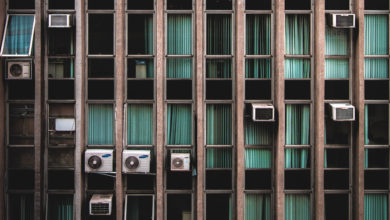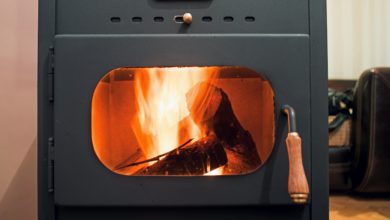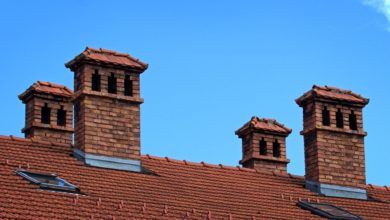Building fires and maintaining them are very essential skills for the outdoors and camping, especially when an area could be dangerous or unknown. It is necessary for survival but most people do not take this fact into consideration when embarking on camping trips or hiking. It goes beyond just throwing a few twigs and dried branches together and pulling out your lighter; you have to know how to cover tracks, curtail the growth of fire so that it does not get out of hand and gets too hot for use.
Due to these needs and more, fire pits were invented and have gone through different stages of changes to get to the levels they are now. There are different types of fire pits, from crude holes dug in the ground to finely-structured gas burners made of stone. The Dakota Smokeless fire pit is just one, albeit a unique one. Note that its uniqueness does not stem from the fact that it is smokeless; there are a number of ways to make smokeless fires out in the wild and fire pits are as old as time. But it’s one of the few ground pits which have been fashioned to do this effortlessly.
The Dakota smokeless fire pit is a well thought-out fire pit born out of a few unique needs for stealth and effectiveness. It is a design where two holes, ideally a foot apart, are dug into the ground. The first hole is the fire pit itself and is usually one foot in diameter and another foot in depth. The second hole is the air hole, which lets in more oxygen and lends heat to the fire. It is usually less than a foot wide and faces upwind. This type of fire pit is mostly used for stealth because it lets out little or no smoke, thereby eliminating the risk of detection. It is also easy to maintain, as it is not too deep or too wide to clean up and can be effectively covered with green leaves.
How to Build a Dakota Smokeless Fire Pit
There is nothing intricate about this fire pit because there is no sophisticated equipment needed to dig one. The fire pit is one of the simplest ones around; all you would need is a sturdy and trusty shovel. First of all, dig the fire chamber. As has been mentioned before, this fire chamber is usually one foot wide and one foot deep. When that hole is dug right, give a little space of about one foot and start another hole, which should be about 6 inches wide.
Dig this second hole in such a way that it connects to the first hole underneath the surface. That is, it would slant in angle downwards to the fire chamber, maintaining its small opening. This second, smaller hole allows for free airflow into the fire chamber and ensures ample supply of oxygen when the fire is kindled, keeping it hot and alive while controlling the amount of air which comes in at a time. This contributes to its smokeless nature because the more the fire burns, the less smoke there is.
Again, you may want to consider adding a few inches of space at the bottom of the fire chamber in order to accommodate twigs or branches which may be larger than normal and difficult to be broken. But this is not a necessary factor to consider when building this fire-hole; it’s just a provision that may come in handy in the long run.
When the digging is done, it would be time to put in some dried twigs and branches into the fire chamber. The magnitude of the fire needed would inform the amount of kindling that is put in. Add a little fuel or a material which burns quickly in order to get the fire going. Remember that all the kindling is not added at the same time; as the fire starts burning from the top to the bottom, add the kindling little by little until there is a strong enough fire for any purpose you need it for.
One major tip to building this type of fire pit is to find a location where there is a steady supply of wind. There would be no point building a Dakota smokeless fire pit without this important factor. And to further strengthen the elimination of smoke, you’ll have to build this fire pit close to a tree as this would help to clear smoke faster, in the event there is any.
Advantages of a Dakota Smokeless Fire Pit
Why can’t one just build a fire pit, throw in some dried wood and get a fire going? Well, it depends on your needs. But this type of fire pit makes room for the consumption of less wood than most other methods of building a fire. You won’t need to go wood-hunting to build a fire in this kind of pit, especially in areas where finding dried wood is a huge task. Little twigs, sticks and branches can be picked around the corners and used as long as they are dry.
Another advantage is that it burns hot enough to cook on. The air hole supplies oxygen which keeps the fire getting increasingly hotter yet controlled enough not to get out of hand. You can get warm over it or cook and boil water with it.
Yet another benefit is its smoke-control feature. When a fire burns very hot, it produces little smoke. The extra hole and the ample supply of air add to this. Instead of the smoke remaining trapped within, where there is smoke, it swirls out through the fire hole as the air propels it. This feature is great if you do not want to be easily detected, especially in dangerous areas. Even at night, the fire pit cannot be detected easily because it is underground and small enough not to let out too much light.
Furthermore, a smokeless pit is easy to cover. When it is no longer needed, you can just throw some naturally-occurring dirt lying around into the holes. And since they are not too deep, you would not need to go to so much stress doing this.
Tips on What to Avoid When Building this Pit
- Check the type of soil on which to build it. Loose soil is not ideal because it would keep falling back down and filling the hole you dig since it won’t hold up solidly as a wall
- Stay away from areas with too many tree roots or rocks. No need to add more hassles to the work of digging. Just find a clear, smooth ground
- Be sure that the ground is not wet or water-logged. It defeats the purpose even before you start
- Use very dry sticks as kindling. Wet wood emits much smoke and does not burn easily. This should go without saying





